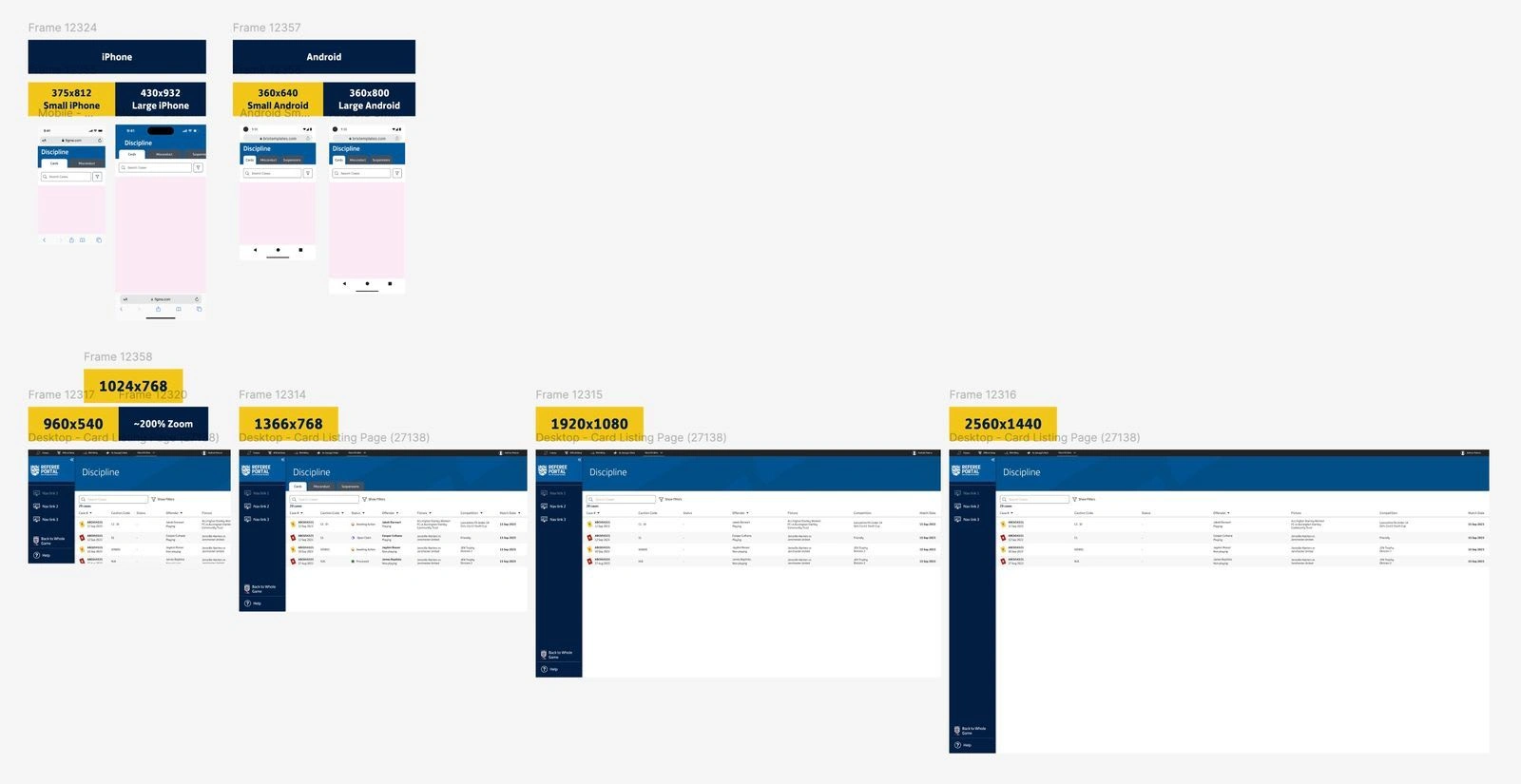The Football Association
Overview
Objective
Digital transformation, enhance user experience, and streamline operations for The Football Association (The FA)
Impact
Increased user engagement and improved operational efficiency
Design Process
Stakeholder Mapping
Identified and mapped all primary and secondary stakeholders, including external stakeholders, to understand their systems and motivations
Strategic Collaboration
Worked closely with product managers to prioritise outcomes aligned with The FA’s vision and department goals
Streamlining and Optimising Resources
Identified areas of common interest across adjacent verticals to streamline changes and utilise time and budgets more efficiently, creating win-win opportunities
Regular Alignment Meetings
Conducted regular meetings with leadership to manage expectations and deliver measurable results.
Start to Finish
Sprints and Reviews
Iterative process with one-month sprints and weekly reviews. Projects divided into epics, features, and tasks, tracked in JIRA
Development Team Coordination
Weekly calls with the development team to address major changes and ensure alignment
QA Sessions
Bi-weekly sessions with QA teams to maintain quality standards
Discovery Phase
Kicked off with meetings to agree on scope and brief
Design and Development Phases
Focused on defining and validating the right solution through testing with internal teams and external members
Planning & Retrospectives
Conducted at the beginning and end of each sprint to identify areas for process improvement

Challenges and Solutions
During my time at The FA, there were a few hiccups that presented themselves periodically. Below I have listed two that came up and how I tackled them.
Onboarding and Mentoring
One of the senior members within the design team left within two weeks of my start, leaving me to learn the system mostly on the fly. Despite this challenge, my line manager was very impressed with how I took to everything and trusted me to onboard new design team members within my vertical.
Successfully onboarded and mentored new senior designers, teaching them about internal systems, design languages, and best practices.
Scheduling Conflicts
Filled in for the Head of Design during her absence, managing roadmapping meetings and strategic planning. I received positive feedback for the initiatives I suggested, which helped shape the direction of future projects and the FA’s digital presence.
Leadership and Strategy
Internal and External Workshops
Conducted workshops with internal and external stakeholders, including senior county FA members from different counties throughout the UK.
Received praise for effectively running presentations and interviews.
Running Verticals
two verticals under the PFF umbrella with full autonomy, organising all areas of design, including workshops and coordination with front-end developers.

Results
Referee Portal
Innovative System Design
Designed a new system and portal to digitise the process of adding playing offences to The FA database. This portal allows match officials (referees, assistants, and 4th officials) to input disciplinaries, match notes, and all their match recordings. It was the first FA portal released with a ‘mobile first’ approach. Despite initial data constraints, creative freedom led to innovative solutions.
Positive Impact and Feedback
Initial feedback from interviews before and after the project showed a huge improvement to the current system and major enthusiasm on the part of the officials. FA registered referees provided positive feedback, noting increased efficiency and satisfaction.
Other Projects
Club Portal
Developed tools for Misconducts Flow, Playing Infringements, and more.
Competition Portal
Enhanced interfaces for competition officials and admin tools.
County Portal
Improved League Management Tools and County Level interfaces.
Projects Challenges
Uncommunicated Changes
When I joined, there was a regular occurrence within my verticals where developers would make changes on their own without updating the design team and rarely the product team as well.
I addressed this by establishing regular calls with lead developers, thus reducing design inconsistencies.
Although this wasn’t solved completely, the methods I suggested reduced this to a large degree.
User Analytics
Collaborated with internal designers to analyse user analytics and plan future design improvements for PFF, such as cementing the need for a mobile first approach, increasing the base mobile screen requirement from iPhone 4 to iPhone 6 and moving to a task led UI instead of an information led one.
Accessibility Standards
Led workshops on accessibility standards within the design, product and dev teams to ensure understanding and compliance with AA requirements.
Conclusions
Working on projects at The FA allowed me to contribute to significant digital transformations and operational enhancements. This experience emphasised the importance of user-centred design, strategic collaboration, and iterative development to achieve organisational goals and improve user satisfaction.
Like this project
Posted Jul 12, 2024
Transformed The FA’s digital presence and reaching for higher accessibility standards — initial access resulted in extremely positive feedback and excitement
Likes
0
Views
7
Clients

The Football Association







